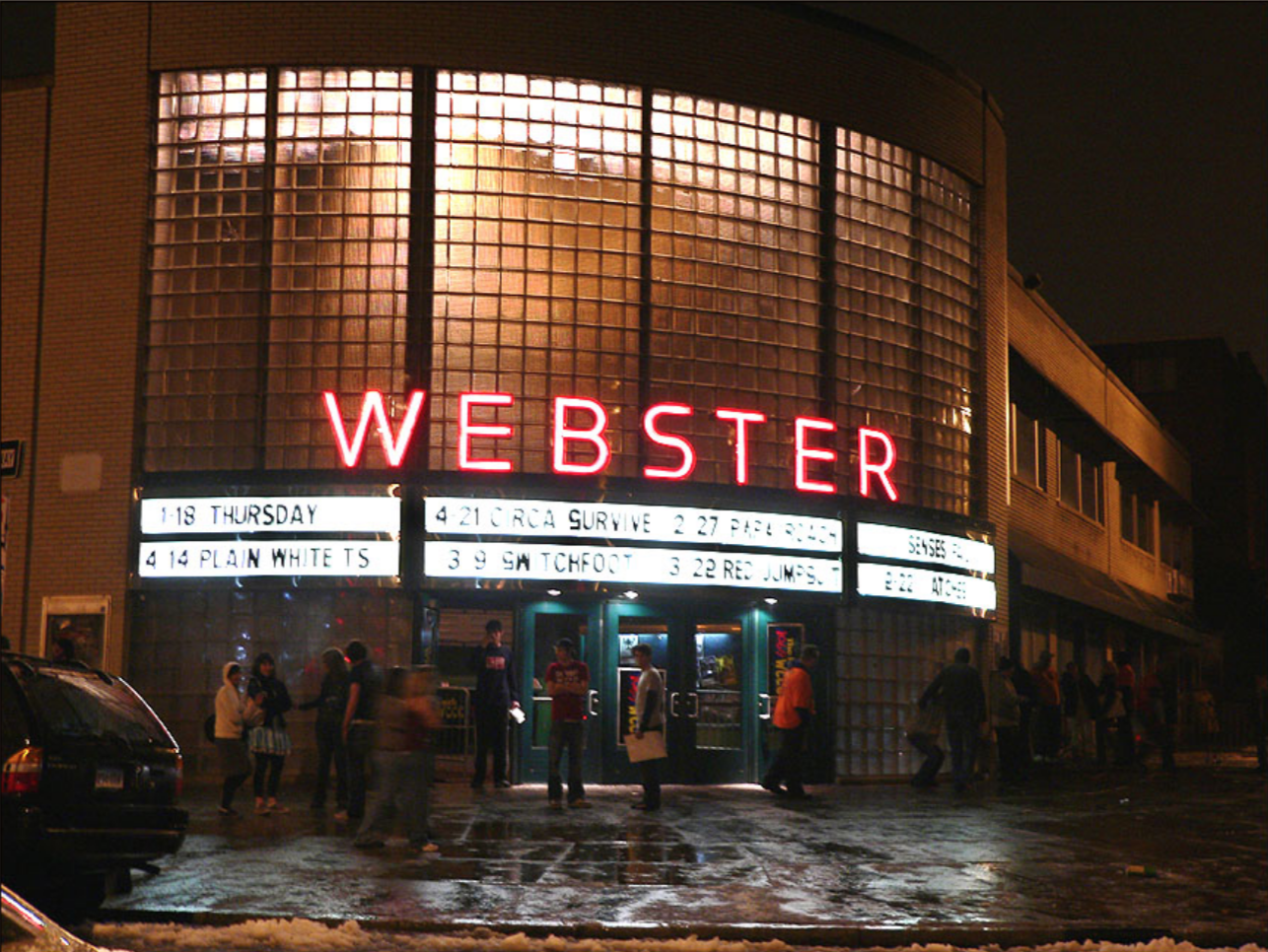A catalyst for the arts
How Connecticut’s forgotten music venue helps fuel Hartford’s creative community
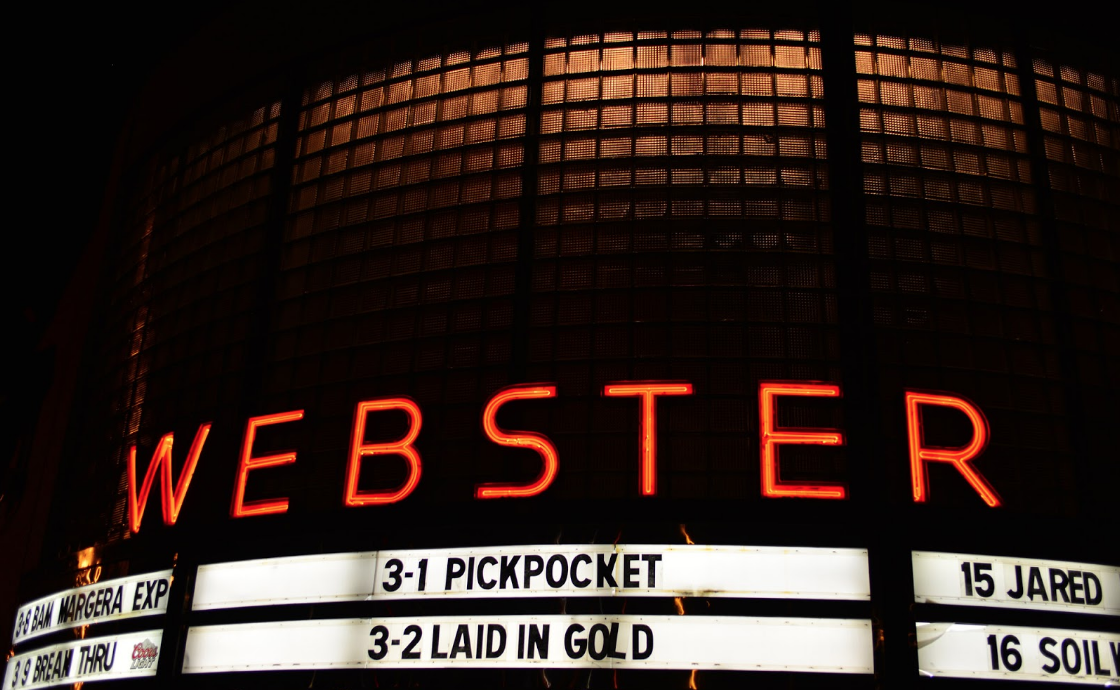
Hartford’s Webster Theater lacks the storied musical history of Toad’s Place, or the sparkling renovations of College Street Music Hall, but it remains one of the only places in Connecticut that is consistently home to crowds of feverish metalheads and punk rockers.
On the corner of Webster and Crown Street, the theater finds itself nestled in the heart of a historic but equally down-on-its-luck area of South Hartford.
Surrounded by the cracked and unkept pavement that runs through the city like veins, it only seems fitting that the splattered blue tile of the once elegant theater now chronicles years of headbanging, slam-dancing and stagediving for the local punk and metal community.
Since its inception as a music venue in 1996, these hallowed halls have incubated the talents of numerous rock and metal acts, helping give artists such as Marilyn Manson, Panic! At The Disco and Fall Out Boy a spot on the stage before they were playing arenas around the world.
“We’ve always been that starting ground for a lot of artists,” talent buyer for the Webster Justin Leach said. “For me, sometimes I just take a step back and say ‘wow’, it’s always a huge moment to take it in and realize that’s the cycle for how artists grow”
While it’s known now as the local hub for hard-rockers, the Art Deco style building once had a more “glamorous” reputation, initially serving the Hartford community as a motion picture theater.
Original owner Albert Shulman told the The New York Times in 1987 that the Webster was quite ahead of its time, offering the only air-conditioned movie viewing experience in Connecticut.
The city was buzzing on the Webster’s opening night in 1937, as Hartford’s elite gathered to experience its newest entertainment luxury.
“It was a gala occasion,'' Shulman said. ''I don't remember what was playing, but I remember it was six o'clock at night, workers were still finishing the ceiling, and everybody started arriving. The Mayor, councilmen, senators.'' Shulman said.
Despite its bewitching start, the emergence of television and multiplex theaters doomed the Webster. Not even its transition into X-rated films in the late 1970s could save the big screen before it’s eventual evolution into charismatic music venue we know it as today.
Regardless of the buildings changes, the historic skeleton of the movie theater still remains. Behind the Webster’s once fashionable Art Deco style glass blocks, the club can be broken into two separate venues.
The Webster Theater is a 1,200 person capacity room specialized for sizable headlining artists, known to draw large crowds. While The Underground, where the volume of Webster’s activity takes place, is a more intimate room that capitalizes on its small space with an abundance of hectic of crowd energy.
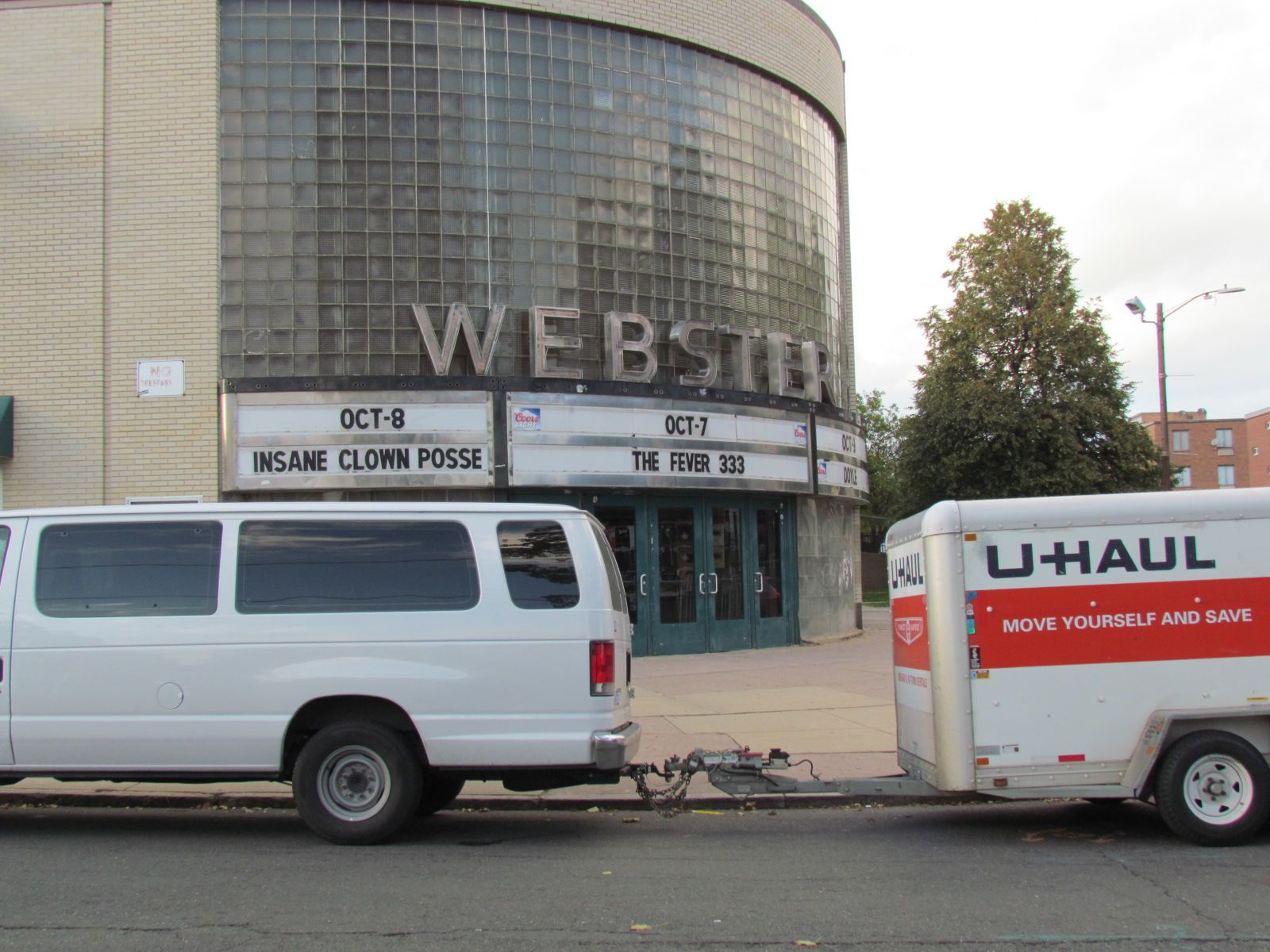
Among the bands that launched their career at the Webster includes Currents, a metalcore act from Hartford currently signed to Sharptone Records. Throughout their career, Currents have performed roughly 100 shows throughout Europe and North America.
The Webster, however, is the venue that they are proud to call home.
“There are not a lot of venues out there that support locals like the Webster does,” Wille said. “If there wasn’t the hope of growth and better opportunities for local alternative music in Connecticut, I don’t think you would see as much flourishing new talent as you do here today.”
“There are not a lot of venues out there that support locals like the Webster does,” Wille said. “If there wasn’t the hope of growth and better opportunities for local alternative music in Connecticut, I don’t think you would see as much flourishing new talent as you do here today.”
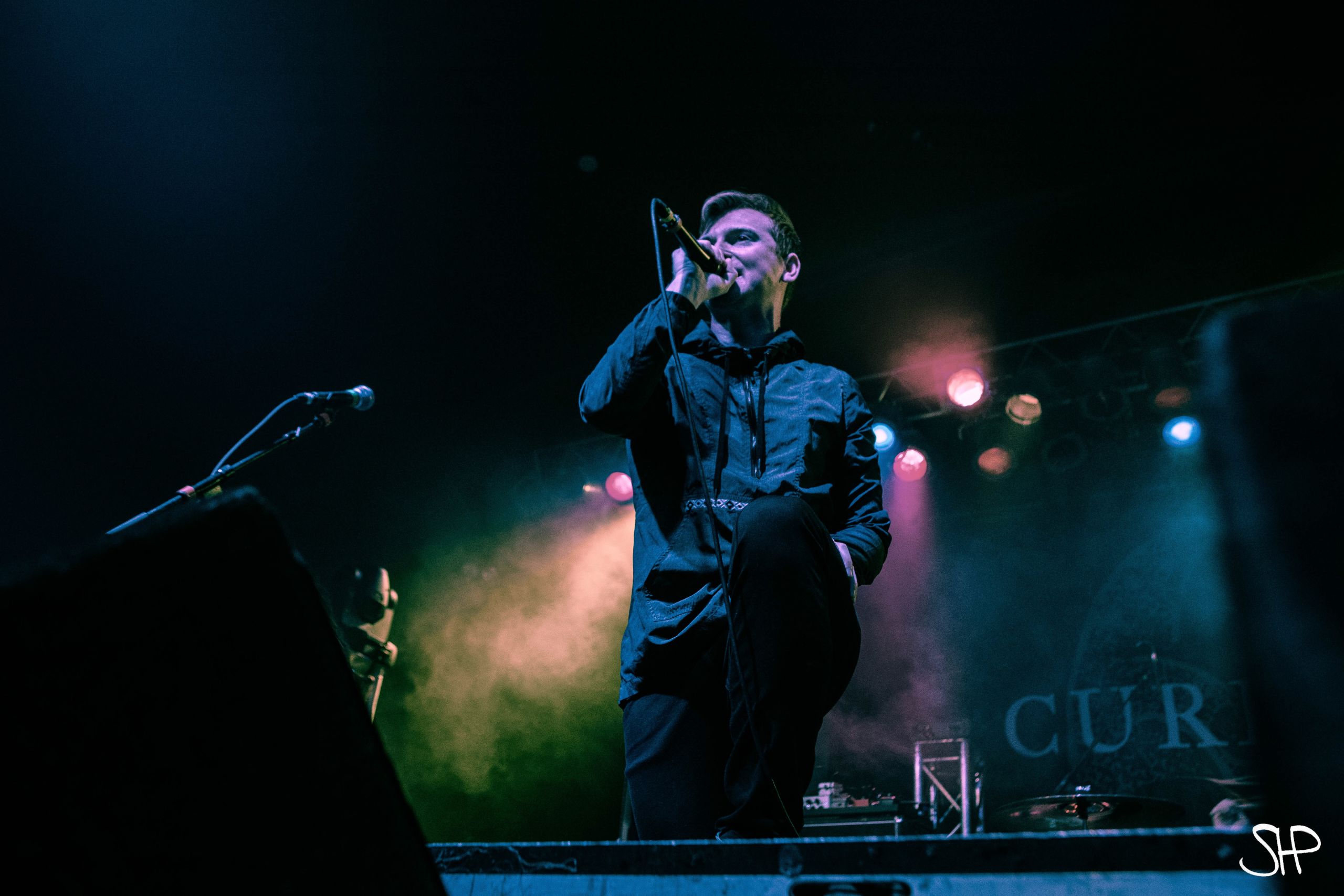
The Webster has not only given musicians a place to hone their craft in an exciting environment, but it has brought about a positive presence to not only Hartford’s music scene but its arts community as well.
Peter Jones-Torregrosa, a photographer from South Windsor, Connecticut, has frequented shows at the Webster since his early teens, helping him chase a creative career path in his own right.
“I think I started going to see friends play at the Underground, it’s what really inspired me to start my own musical journey, ultimately leading to concert photography,” Jones-Torregrosa said. “I loved going there and seeing them do what they love, and it made me realize that I can also pursue a daring dream.”
The Webster is home to a form of creativity that can bring people together in a positive way -- in a neighborhood that is anything but. Willie recognizes that his band and the theater itself serve as an oasis of sorts from the unfortunate reality of the area that surrounds the building.
“Hartford is plagued with crime, poverty and city management issues, which can make it a difficult place to live in,” Wille said. “Everyone needs an escape sometimes, and seeing live music at the Webster provides that escape for a lot of people. It is one of the only venues in the state that books metal, hardcore and alternative music, and does a great job at that. The Webster puts Connecticut on the map, and without it, there wouldn’t be the thriving metal and hardcore community there is right now.”
Crime figures from Hartford show that the city is certainly not the safest place in Connecticut. According to SpotCrime.com, which posts crime statistics sourced to official reports, Hartford's crime rate is 87 percent higher than the U.S. average and shows one out of every 19 city residents is a crime victim.
“I remember being 16 and trying to convince my parents that the area was safe enough for me to attend the shows,” Jones-Torregrosa said.
Although crime may run rampant throughout the area, the Metro Hartford Alliance, an organization responsible for the development and stimulation of Hartford’s economic growth has implemented a number of positive initiatives to bring in young people to reside in the Hartford area.
One of the programs put into place by the Metro Hartford Alliance includes the “Hartford Young Professionals and Entrepreneurs” or HYPE initiative.
Established in 2006, this program was put into place in order “to help young professionals better understand and utilize the assets” of the Hartford region, according to the Metro Hartford Alliance website.
HYPE Executive Director Kim Bishop helps organize over 80 community events a year to cater to young professionals in the Hartford area and recognizes the influence that a blossoming arts scene can bring to a city trying to shake its negative reputation.
“It’s so important to have a thriving arts community, the Webster being one of them … it’s so vital because it gives young people a place to go, to experience things,” Bishop said. “Having that in the city is a great way to draw young professionals because they want things to do, they want to have access to all these things they wouldn’t in other cities.”
For the Webster itself, it’s presence within the community offers a glimpse of hope for the future of the surrounding area.
“It’s undoubtedly in a tougher neighborhood,” Leach said. “But the more activity here, the better it is for the local community on a ton of different levels. It brings people down here to stimulate local businesses and really creates more of a reason to come down here in general, which in turn we hope would help crime rates fall and encourage local businesses to want to pop up”
The clubs commitment to maintaining a strong positive relationship with the historic city can be seen at the annual “community day” held in the parking lot of the theater.
Local fire and police departments, as well as nonprofits, attend in order to educate and become actively involved in the neighborhood, as locals gather to enjoy a free barbecue.
“We do everything we can here to be involved,” Leach said.
The success of the Webster’s events, as well as the positive impact it bolsters to the local area is an outlier in today’s climate for mid-sized venues.
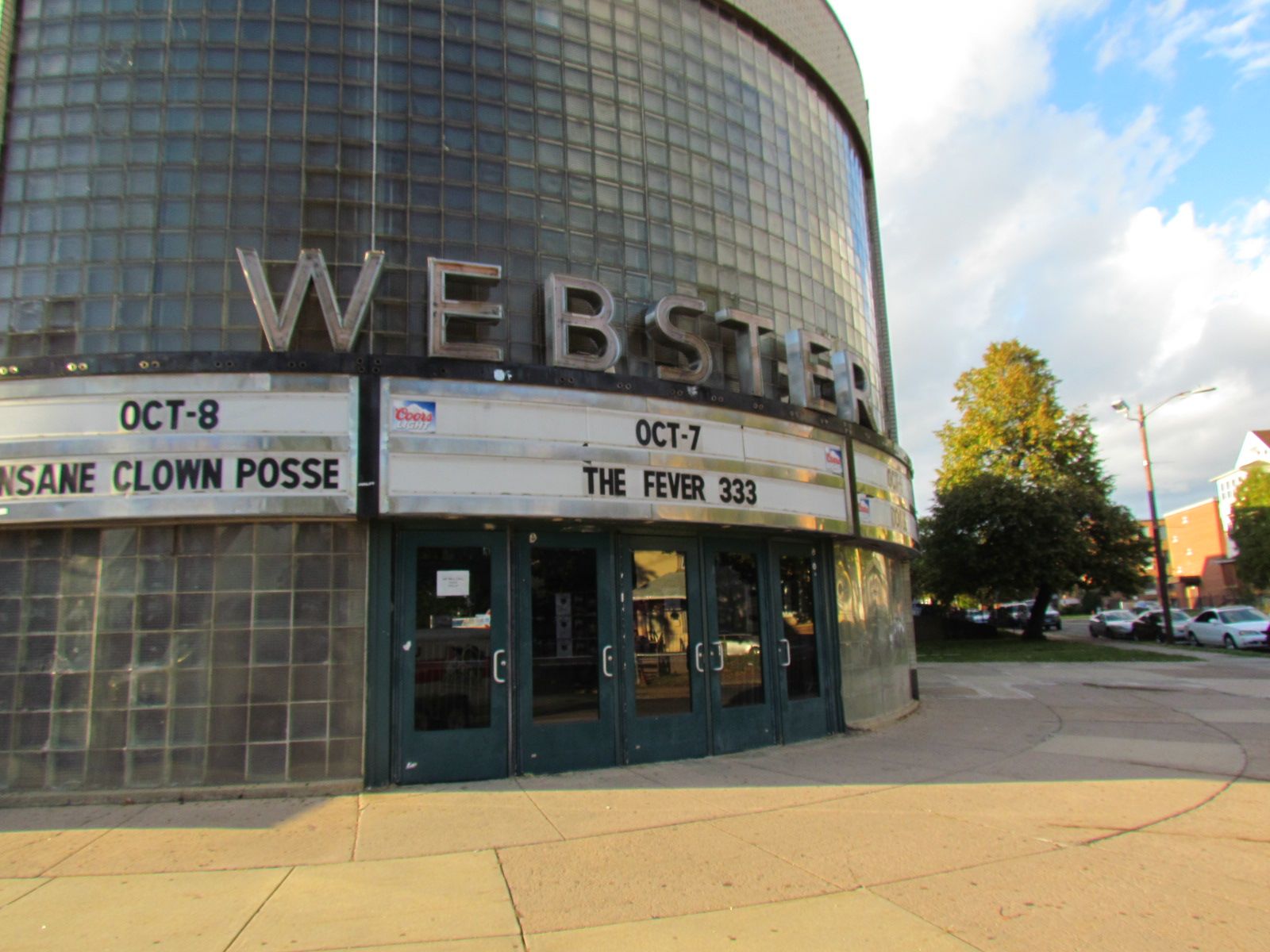
Due to the continuing decline of ticket sales, and the increasing cost of keeping venues open, sites similar to the Webster have been closing their doors nationwide.
Coupled with the emergence of rap and hip-hop as dominant genres in popular music, especially for the younger demographic, heavier music genres continue to fall by the wayside.
When rock dominated the charts during the 80s and 90s, the live aspect was wildly important, as bands were typically comprised of many members, with the only way of spreading your music through radio play or extensive touring.
However, with the rise of online streaming sites like Apple Music, Spotify and SoundCloud, artists have the ability to become viral sensations overnight, using substantially less equipment, and without the help of record labels.
In recent years, “SoundCloud rap” has taken both the internet and the charts by storm.
Artists like Lil Pump, Lil Uzi Vert, and Ski Mask the Slump God’s electronic beats, and braggadocious bars have become commonplace in pop culture, using this platform to take the mainstream by storm.
Despite the emergence of rap, Leach still believes the power of punk lies in its uniquely distinct experience during live shows.
“The experience is unmatched from the visual-auditory standpoint,” Leach said. “You are submerged in the moment. You don’t get that type of experience listening to something on Spotify or Apple Music,”
A pop music expert feels as though the days of writing angsty songs with your friends in the garage are over, as kids turn to their laptops in order to focus their creative musical energy in the present “SoundCloud era.”
There’s a lot less incentive of starting a band, which typically requires more members and equipment, and a features a substantially less visible web presence according to George Sprengelmeyer, who teaches American popular music at Quinnipiac University in Hamden, Connecticut.
Unlike the mainstream artists mentioned above, for musicians who don’t find themselves topping the Billboard charts, making a living off these streams alone isn’t enough to keep careers afloat.
For hardcore, punk and metal bands with a much smaller web presence and fan base, playing live shows continues to be the only way for the niche genre to survive this ever-changing industry.
“Without the venues there to support the music, the live music doesn’t happen,” Visiting Professor of Music at Quinnipiac University Kyle Saulnier said. “I think certain types of music are designed for the studio or for the stage ... punk is not going to be punk without the live experience.“
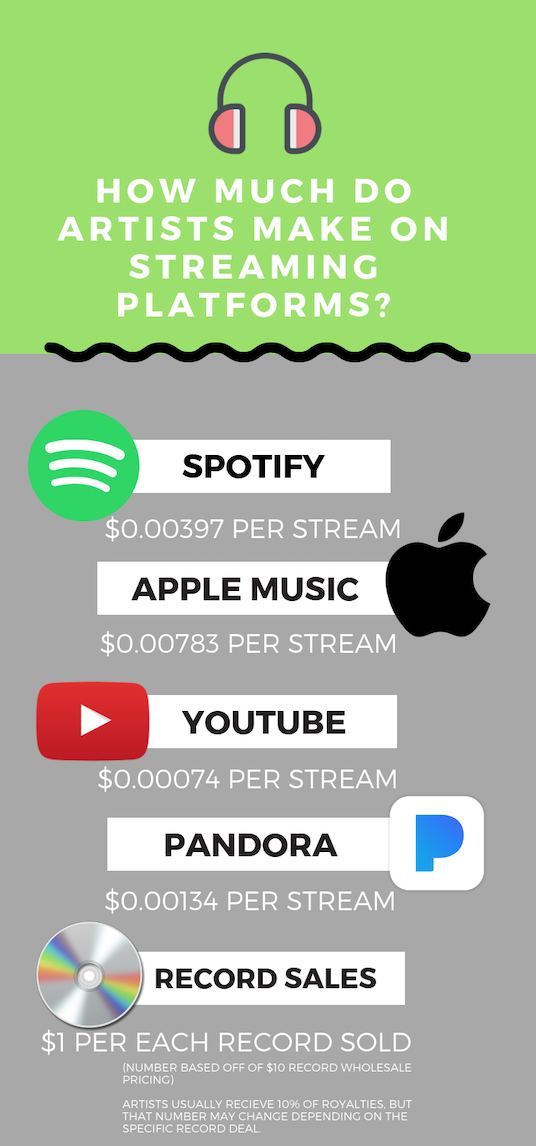
The Webster’s bread and butter continues to be serving the punk rock community, yet it’s dedication to bringing Hartford entertainment for all walks of life proves its commitment towards representing the entire city.
Whether it’s because the venue continues to consistently put on raucous events to its niche fan base, or that it’s an active launchpad for local artists to breakthrough into the mainstream, the fact is — people continue to come back.
“For a lot of bands in Connecticut, the Webster is one of the best opportunities you have to ‘make it.’” Wille said. “Right now, I believe the Webster to be in it’s best spot in years and I hope it continues as long as possible."
